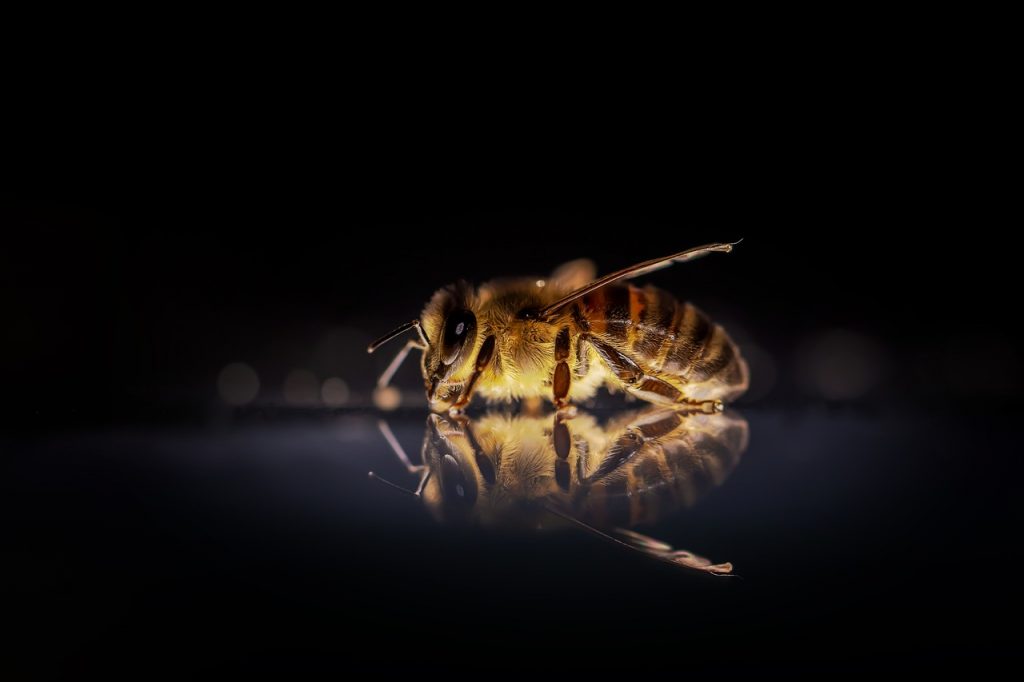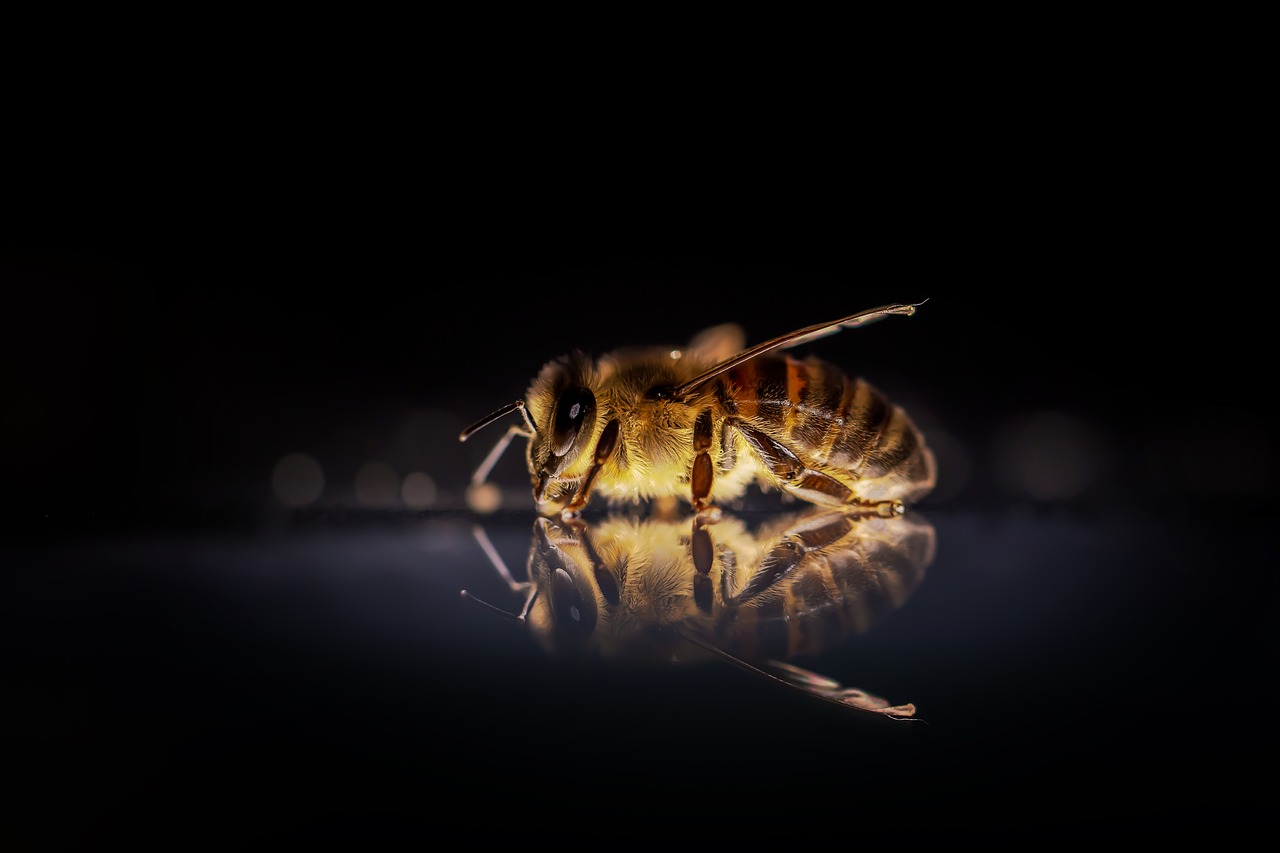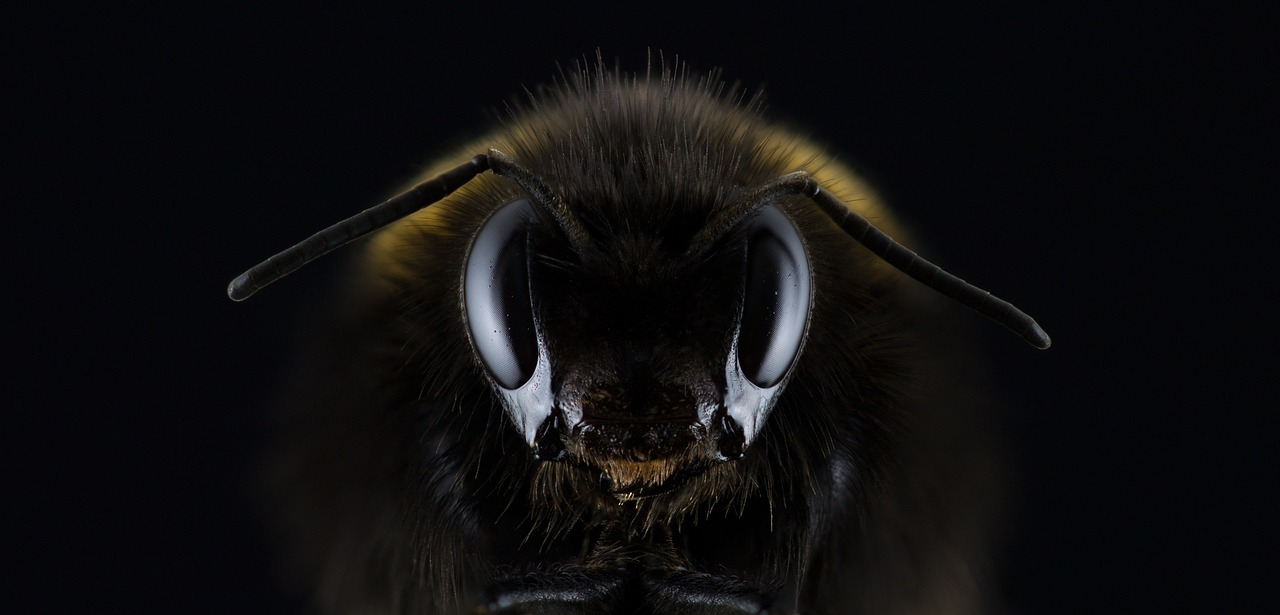
 There are different terms used for creatures who are active during the day, night, and both. Who are active during the day are called diurnal. Nocturnal are those who are active during the night, i.e., after sunset. Crepuscular are those who are busy during dawn or dusk, i.e., twilight. Most bees around the globe are diurnal. However, there are exceptions since some bees have shown tendencies to be nocturnal or crepuscular.
There are different terms used for creatures who are active during the day, night, and both. Who are active during the day are called diurnal. Nocturnal are those who are active during the night, i.e., after sunset. Crepuscular are those who are busy during dawn or dusk, i.e., twilight. Most bees around the globe are diurnal. However, there are exceptions since some bees have shown tendencies to be nocturnal or crepuscular.
So, do bees actually swarm at night? Yes, some bees swarm at night and they can even attack you if you disturb them. Some of them has evolved eyes which allows them to see them in the dark. The swarm to find places to build new colonies.
What Type Of Bees Flies Out At Night?
Research has shown these tropical varieties of bees to forage at night. These bees can navigate their way from their hives to collecting grounds, even in pitch darkness.
Some of the families are:
- Colletidae family of bees are also known as the plasterer bees since they coat their hives with saliva, giving it cellophane-like finish.
- Andrenidae bees are found in arid regions and often nest in the ground.
- Halictidae species are found all over the world. Their smaller varieties are also known as sweat bees since they get attracted to perspiration. They are mostly dark-skinned and metallic in color.
- Apidae family consists of most commonly found bees, including the bumblebee, carpenter bee, honey bees, orchid bees, cuckoo bees, and stingless bees.
Species consists of:
- Megaloptaatraare nocturnal bees and found in Panama highlands
- The Indian carpenter bee Xylocopa, fly out even in pitch darkness, in a moonless night.
- Xylocopatabaniformis species are present in the American subcontinent. They are horse-fly like carpenter bees, who forages during the twilight.
- Other crepuscular species of bees are Xenoglossa fulva, Ptiloglossa guinea, Ptiloglossa jonesi, Ptiloglossa arizonensis, Caupolicana yarrow, Caupolicana ocellata, Martinapis luteicornis, Peponapis or squash bee, Lasioglossum galpinsiae and Megalopta genalis of Central America
- LasioglossumTexana or sweat bee, though primarily diurnal, were found to forage in the light of half-moon nights.
- Two varieties of honey bees, Apis dorsata, giant Asian honey bee, and Apis mellifera adansonii, African honeybee, are found to forage in up to half moonlight nights.
Why Do Bees Venture Out At Night / After Dark?
Some of the reason for certain bee types to setout after sundown, are as follows:
- They could avoid predators and parasites at night and blissfully continue with their nectar collection.
- There is less competition after sundown. Bats and moths are their only competitors, compared to other bees, wasps, and insects during the day.
- There are large varieties of flowers that open up after sundown and before sunrise. Most of these nocturnal bees live in such areas. They get to collect an abundant fresh supply of nectar and pollen from these flowers.
- Dry environments also force bees to adapt to forage after dark when there is moisture in the atmosphere, helping these worker bees to toil for an extended period.
Do Some Bees Have Night Vision?
 All bees have five eyes – 2 compound eyes and three simple eyes. These compound eyes help them to see all around them, while the simple eyes, which are at the top of their head, help them with orientation and navigation.
All bees have five eyes – 2 compound eyes and three simple eyes. These compound eyes help them to see all around them, while the simple eyes, which are at the top of their head, help them with orientation and navigation.
In the night-time flying bees, their ocelli or simple eyes are larger. These light-sensitive eyes provide them with better vision during the low amount of light. For example, among Indian carpenter bee, the size of their ocelli is double the size, compared to those who are diurnal.
The compound eyes of nocturnal bees are larger than similar diurnal species, though not as large in proportion as their ocelli.
Swarming
Swarming is a process when bees build their new colonies. Here, the queen bee leaves their old colony along with 60% of the worker bees to set up another colony. Such swarm could contain thousands of bees, depending upon their colony population.
Swarming occurs when the queen bee has laid her germinated eggs, which would develop into new queens. To be able to fly out, the queen is stopped from feeding, to shed her weight.
Swarming mainly occurs in spring, but depending upon the environment and location, it could happen many times during the year. Swarming is part of the honey bee’s reproduction process, which can occur multiple times during a short period.
The scout bees identify a new home site before the queen bees fly out with her workers. Smaller swarms occur when newly formed queen bees take some of the workers to set up a new colony.
Does Swarming Occur At Night?
The above species of bees, who have evolved night vision, prefer to swarm after sunset. Like all human beings, insects, including bees, require some time during the day to rest and recoup their energy. Since they are used to foraging after sunset and before sunrise, they catch up on sleep during the day.
The Reasons To Swarm At Night
Since these species of bees have accustomed themselves to see in dim light, they can locate the new hiving site, communicate to their team, and the decision is taken to swarm at a particular time after sunset. The reason for them to choose this time are as follows:
- The environment is much more compatible and moist, especially in arid regions.
- They avoid all kinds of predators and parasites in the cover of darkness
- They have enough time to settle down before the sunrise and chances of being attacked by birds and other insects like hornets.
Is Swarming Dangerous?
Swarming is a natural process of a bees’ lifecycle. They are very focused on their routine activities. If they encounter any impediment in their flight path, they would feel threatened and would retaliate with a sting.
Swarming control
Some beekeepers do not wish to increase their already existing hives, follow various measures to control swarming. Some of them are:
- Clipping one wing of the queen bee retards the swarming process. This method is used for retrieval of the bees to their original hive.
- In the Demaree method, queen cells are identified and destroyed after emptying the hives. This reduces the reason for the bees to swarm.
- Expanding the existing hive by opening the brood nest is another method adopted to avoid swarming.
- When the bees feel that they have enough storage or honey, do they swarm to a new hive or colony? If the honey frames get replaced with empty frames, the urge to swarm will diminish among the bees, since they have to continue with the storage of the honey process. This method is called checkerboarding.
Does Light Attract Bees At Night?
Bees from nearby hives get attracted to the light in the porch, or the garden, and also in the street. They are attracted to bright light due to their phototactic reaction.
If you find dead bees the next day, in your porch or garden, they may have to get attacked by parasite fly called the Apocephalus Borealis. These tiny flies lay eggs directly on the body of the bees. Once they get hatched, the larvae prey on the body of the bees, which makes them agitated, and later collapses.
Do Bees Ever Sleep?
Bees like human being require 5 to 8 hours of sleep, especially the worker bees. They work hard collecting nectar and pollen, keeping the hive clean and warm, feeding the larvae, keeping away predators, scouting for a new source of nectar or hive location. During their sleep, their antennas stop moving, wings get closed, and their lover body droops.
Conclusion
Bees are mostly diurnal, though there are crepuscular and nocturnal varieties too. Depending upon the terrain, availability of nectar, predatory activities, lesser competition, bees in that region has adapted to low light & pitch dark foraging.
These bees, which get used for foraging at night, also swarm during this period, due to similar reasons. Swarming in the wilderness cannot be controlled. However, beekeepers have ways and means to deter swarming.
Welcome to my blog. I have been doing pest control for years since my house, garden and pets were always attacked by various kinds of pests and as a result I had to know proper pest control techniques that works. In this blog I share all the tips and tricks that I know and I hope you’ll find it helpful.
